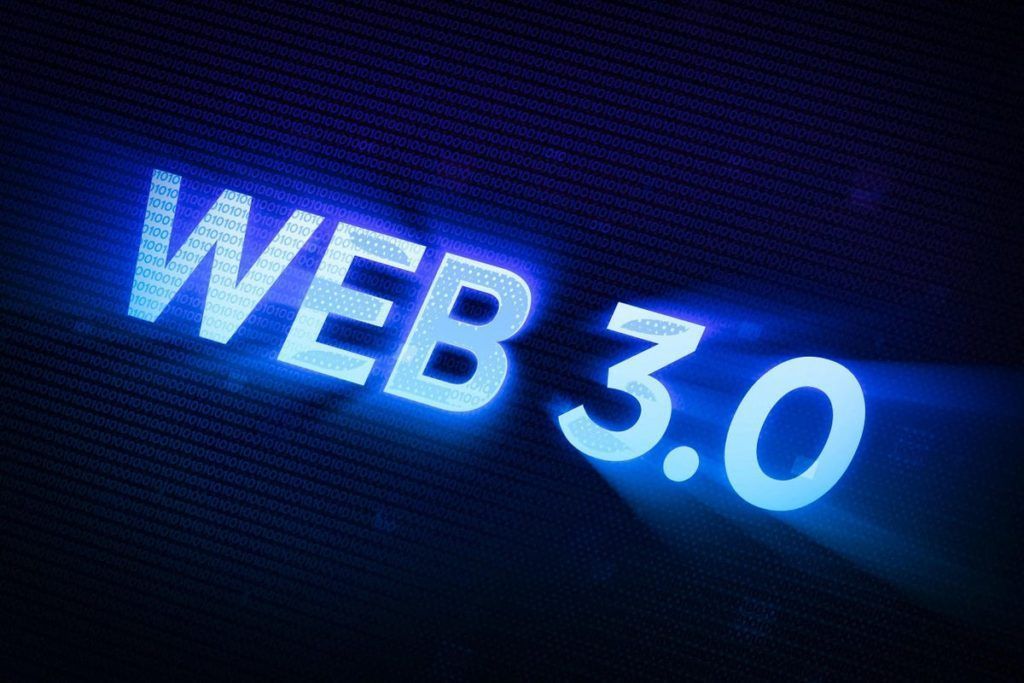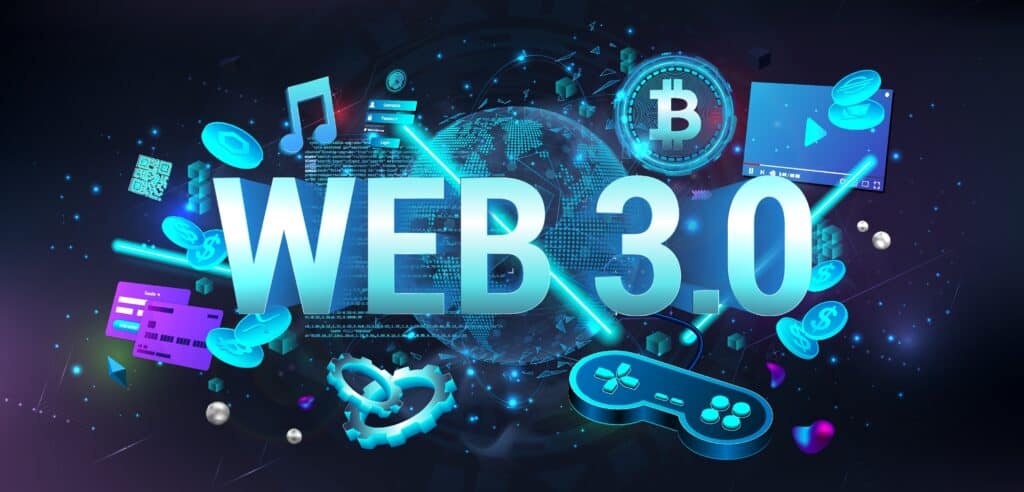In today’s rapidly evolving digital landscape, the emergence of a web 3.0 coin represents a pivotal shift towards a more decentralized and user-empowered internet. As we transition from Web 2.0 to Web 3.0, these innovative cryptocurrencies are redefining how we interact online, enabling users to regain control over their data while fostering a new economy based on transparency and trust. This article will explore the intricacies of web 3.0 coins, their implications for finance, technology, and society, and how they are set to revolutionize our digital experiences.
Understanding Web 3.0

To appreciate the significance of web 3.0 coins, it is essential first to grasp what Web 3.0 entails. The concept of Web 3.0 refers to the next generation of the internet, characterized by decentralization, enhanced user privacy, and improved interactivity through technologies like blockchain, artificial intelligence, and the semantic web.
Web 1.0 was a static web where information was unidirectional; you could only read content without engaging. Web 2.0 introduced user-generated content, leading to the rise of social platforms that allowed two-way interaction but often at the cost of user privacy and ownership of data.
With Web 3.0, the aim is to create an ecosystem where users can interact seamlessly, maintain ownership of their digital identities, and conduct transactions without relying on intermediaries.
The Architecture of Web 3.0
The architectural design of Web 3.0 is fundamentally different from its predecessors. It utilizes decentralized networks and technologies to promote security, scalability, and efficiency. This section delves into the key components that make Web 3.0 distinct.
Decentralization
Decentralization is the cornerstone of Web 3.0. Unlike traditional web services that rely on centralized servers, Web 3.0 operates on distributed ledger technologies such as blockchain.
This eliminates single points of failure and reduces the risks associated with data breaches and censorship. Users can engage directly with one another, fostering trust and transparency in transactions.
By cutting out intermediaries, Web 3.0 enables peer-to-peer interactions that empower individuals and communities. This not only enhances security but also democratizes access to information and services.
Smart Contracts
Smart contracts play a vital role in the infrastructure of Web 3.0 and are a significant reason behind the popularity of web 3.0 coins. These self-executing contracts with the terms of the agreement between buyer and seller being directly written into lines of code automate various processes.
They run on blockchain technology, ensuring that once executed, the terms cannot be altered or tampered with. This innovation streamlines transactions and reduces the need for third-party intermediaries, which can save time and costs.
Moreover, smart contracts can enforce compliance and manage complex transactions, making them invaluable across industries like finance, real estate, and supply chain management.
Interoperability
Interoperability is another critical feature of Web 3.0, allowing different systems and networks to communicate seamlessly. This capability fosters innovation and collaboration among multiple platforms, enhancing user experiences.
By integrating various blockchain networks and applications, users can transfer assets and data across platforms easily. Thus, web 3.0 coins can thrive in this environment, facilitating transactions across multiple ecosystems without friction.
User Empowerment in Web 3.0
One of the most profound impacts of Web 3.0 is the empowerment of users. In this new paradigm, individuals gain greater control over their digital footprints and the content they share.
Digital Ownership
Digital ownership is a fundamental tenet of Web 3.0. Through blockchain technology, users can truly own their data and digital assets, including cryptocurrencies and NFTs (non-fungible tokens).
This shift allows for the monetization of personal data, giving users the agency to choose who has access to their information while receiving compensation for its use. Such a model stands in stark contrast to Web 2.0, where users typically relinquish their rights to data in exchange for free services.
Empowering users in this way encourages a culture of trust and mutual benefit, where the value generated by users does not solely benefit corporations.
Enhanced Privacy
Enhanced privacy measures are crucial in creating a user-centric web experience. With the advent of Web 3.0, technologies such as zero-knowledge proofs and advanced encryption techniques provide users with the tools to safeguard their data.
Users can engage in transactions without revealing sensitive information, paving the way for a more secure digital environment. The ability to control privacy settings builds confidence among users, encouraging broader adoption of web 3.0 coins.
Community Governance
In Web 3.0, community governance takes center stage. Decentralized Autonomous Organizations (DAOs) allow users to participate actively in decision-making processes related to projects they care about.
Through voting mechanisms, stakeholders have a say in project development, funding, and policies. This model promotes accountability and ensures that the direction of projects aligns with the interests of the community rather than serving the whims of a few executives.
Community governance fosters a sense of belonging and ownership, driving engagement and investment in web 3.0 coins and projects.
The Role of Web 3.0 Coins in the New Economy
As Web 3.0 continues to shape the future, web 3.0 coins emerge as integral players in the new economic landscape. These coins embody the principles of decentralization and user empowerment, providing opportunities for innovation and financial inclusion.
Financial Inclusion
One of the most compelling benefits of web 3.0 coins is their potential to enhance financial inclusion globally. Traditional banking systems often exclude underserved populations due to geographical constraints, lack of identification, or high fees.
Web 3.0 coins break down these barriers by enabling anyone with internet access to participate in the global economy. Users can engage in transactions, send remittances, or invest in projects without the need for traditional banking infrastructure.
This democratization of finance empowers individuals, especially in developing regions, to build wealth and improve their quality of life.
Tokenomics
Tokenomics refers to the economic models underpinning cryptocurrencies and is a critical aspect of web 3.0 coins. Understanding tokenomics is essential for investors and developers alike, as it shapes the sustainability and utility of a coin.
Successful web 3.0 coins often feature unique token models that incentivize user participation, promote long-term holding, and provide utility within their ecosystems.
For instance, some projects may offer staking rewards, where users lock their tokens to support network security and receive additional tokens as incentives. This mechanism aligns the interests of users with the health of the network.
Additionally, governance tokens allow holders to vote on project proposals, shaping the future of the ecosystem. By designing robust tokenomics, projects can foster community involvement and ensure their long-term viability.
Investment Opportunities
Web 3.0 coins present exciting investment opportunities as they tap into the transformative potential of the decentralized internet. Investors can benefit from early-stage projects that leverage blockchain technology to disrupt traditional industries.
However, investing in web 3.0 coins requires careful research and risk assessment. The volatile nature of cryptocurrency markets necessitates a nuanced understanding of market dynamics, technological developments, and regulatory considerations.
Investors should evaluate each project’s fundamentals, community engagement, and roadmap before committing capital. As the ecosystem matures, identifying projects with strong use cases and active development teams will become increasingly important.
Challenges and Considerations in Web 3.0
While the promise of web 3.0 coins is immense, several challenges and considerations must be addressed to realize their full potential.
Scalability Solutions
Scalability remains a significant hurdle for many blockchain networks, impacting transaction speeds and costs. As user adoption grows, networks must implement solutions to accommodate increased demand without sacrificing performance.
Layer-2 scaling solutions, such as sidechains and state channels, offer promising avenues to enhance throughput while reducing congestion on main chains.
Projects that effectively address scalability issues will position themselves favorably within the competitive landscape of web 3.0 coins.
Regulatory Landscape
The regulatory landscape surrounding cryptocurrencies is evolving rapidly, presenting both opportunities and challenges for web 3.0 coins. Governments worldwide are grappling with how to regulate this new asset class while fostering innovation.
Developers and investors must stay informed about regulatory developments, as changes in policy can significantly impact the viability of projects. Engaging with policymakers and advocating for balanced regulations that support innovation while protecting consumers will be paramount.
Security Risks
Security risks pose a substantial threat to the integrity of web 3.0 coins. Hacks, phishing attacks, and vulnerabilities in smart contracts can lead to significant financial losses for users and undermine trust in the ecosystem.
Projects must prioritize security audits, implement robust safeguards, and educate users about safe practices to mitigate risks. Building a culture of security consciousness is vital for sustaining user confidence in the web 3.0 landscape.
FAQs

What are web 3.0 coins?
Web 3.0 coins are cryptocurrencies designed to facilitate transactions and interactions in the decentralized internet. They often embody the principles of decentralization, user empowerment, and privacy inherent in Web 3.0.
How do web 3.0 coins differ from traditional cryptocurrencies?
While traditional cryptocurrencies focus primarily on serving as digital currencies, web 3.0 coins emphasize building decentralized ecosystems that empower users through features like governance, ownership, and interoperability.
Can web 3.0 coins be used for everyday transactions?
Yes, web 3.0 coins can be utilized for everyday transactions, similar to traditional cryptocurrencies. However, their primary focus lies in enabling decentralized applications and empowering users within their respective ecosystems.
Are there specific advantages to using web 3.0 coins?
Absolutely. The advantages of web 3.0 coins include greater control over personal data, enhanced privacy, lower transaction fees, and opportunities for community governance and financial inclusion.
How can I get involved in the web 3.0 space?
Getting involved in the web 3.0 space can be achieved by researching projects, participating in community forums, investing in promising web 3.0 coins, or exploring opportunities to develop decentralized applications.
Conclusion

The advent of web 3.0 coins heralds a new era of the internet, where decentralization and user empowerment take precedence over centralized control. As we navigate this transformative landscape, it is crucial to understand the underlying principles and technologies driving the evolution of the web.
From promoting financial inclusion to enhancing privacy and security, the potential applications of web 3.0 coins are vast and varied. By embracing this new paradigm, we can unlock unprecedented opportunities for innovation, collaboration, and community engagement.
As we continue to witness the growth of web 3.0, staying informed and participating thoughtfully in the ecosystem will be key to harnessing the transformative power of this revolutionary movement.
Khám phá thêm từ FINLAUNCH.NEWS
Đăng ký để nhận các bài đăng mới nhất được gửi đến email của bạn.
